Five years later
Pandemic ushered in some legislative changes that are still with us
Page 2



Five years later
Pandemic ushered in some legislative changes that are still with us
Page 2


BRIANA BRADY STAFF WRITER
The Champlain Valley School District might build workforce housing on a 30-acre plot the district owns off Route 7 in Shelburne.
“It would be dense housing,” school board member Dave Connery said. “Condos and apartments, and a portion of that would be set aside for young teachers to have low-cost housing while they’re first coming into the district.”
According to chief operating officer Gary Marckres, the district has been contemplating what to do with this land for some time.
“There is an idea that we’ve always had about the difficulty of the housing situation in Vermont, and how we might be able to help staff if we had a way to maybe provide affordable housing or be part of a program that provides affordable housing,” Marckres said.
District officials and administrators had been discussing the plot when they discovered a company called Oldivai. The Washington-based company works with organizations to develop workforce housing that’s affordable to their employees.
Susan Gillespie, Oldivai’s

chief operating officer, and her partner John Milne, started in the healthcare industry, then they moved into housing, focusing first on building housing for hospital employees like lab techs or food service workers, who don’t necessarily make the same level of income as doctors or hospital administrators. Champlain Valley would mark a move by the company into a new sphere.
“There’s a lot of industries that are having similar issues where their workforce needs to be in person, but they’re not necessarily able to afford housing near where they work,” Gillespie said.
It’s a sentiment that’s been echoed continually in Shelburne’s discussions of affordable housing. Last month during a candidate forum, Erika Lea, one of Shelburne’s school board directors, was asked about her take on affordable housing.
“We want the best educators and staff in our buildings and in our central office, and I know that, to remain competitive as an employer, you need to be able to have people be able to live within a 45-minute drive of your schools, which is certainly not easy right now,” Lea said.
See HOUSING on page 12
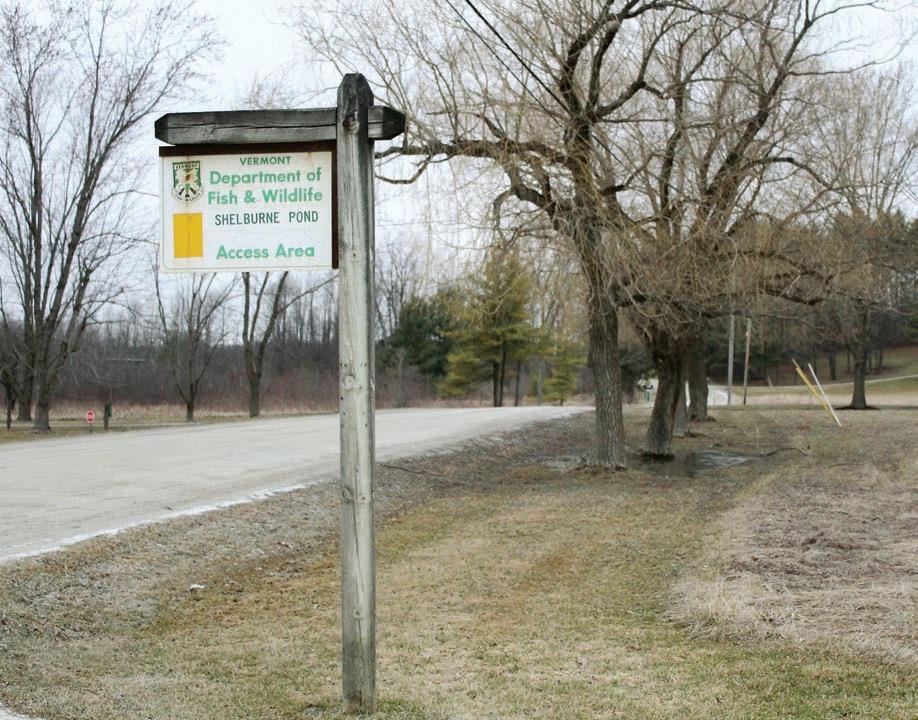
BY
BRIANA BRADY STAFF WRITER
The frogs are coming. Salamanders too.
Sometime in the next couple of weeks, there will be what Shelburne natural resources committee member Jon Cocina described as an “overwhelming” number of amphibians crossing Pond Road
in Shelburne as they return from their forest homes to the pond to reproduce.
In anticipation of the crossing, the town has agreed to close a portion of the road for one night during the frog-pocalypse in order to grant them car-free passage across the road.
Cocina, who has been organizing a community event around
the amphibians’ annual trek, said it’s hard to know exactly when they’ll arrive. The conditions have to be just right — warmer temperatures and wet earth. Cocina’s put together an email list so that he can notify the community on the night it’s happening.
on page 16

SHAUN ROBINSON VTDIGGER
Five years ago this month, the Vermont Legislature decided to adjourn — for at least a week — as lawmakers’ concerns about the spread of Covid-19 began to mount.
“We’ll see what happens,” then-House Speaker Mitzi Johnson said, as Statehouse staff started preparing to close off the building. “A week or two from now, I can’t imagine where we’ll be.”
It would be far longer than that, of course, before lawmakers got back to business as usual.
Reported cases of Covid-19 soon exploded across the state, and by May, when the House and Senate would have adjourned for the year under normal circumstances, the virus was sending dozens of people at a time to the hospital and had killed at least 55, according to state data.
Legislators conducted most of their business from home in 2020 and 2021, with staff scrambling to stand up meetings on Zoom and livestreams of those proceedings on YouTube. Lawmakers planned to return to the building in 2022, but then backtracked over concerns about Covid-19’s highly transmissible Omicron variant. It wasn’t until January 2023 that lawmakers gaveled in for a legislative session that would, ultimately, take place entirely within the Statehouse walls.
If an immediate impact of the pandemic was to push legislative work out of Montpelier, though, one lasting impact, five years on, has been the way it jolted a deeply analog institution into the digital world — and, in many ways, made lawmakers’ process more
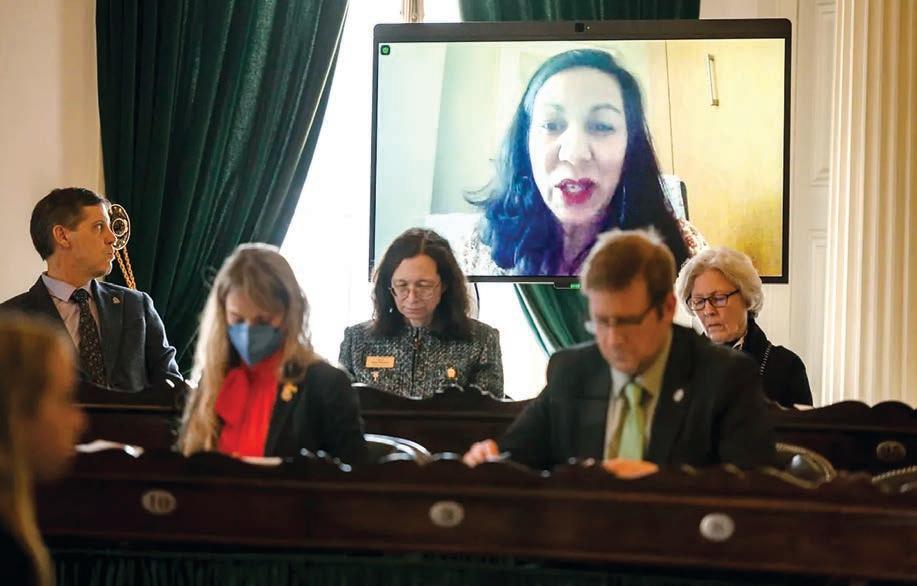
accessible to the public.
After coming back into the Statehouse for good, lawmakers opted to continue streaming video of their work, prompting a need for new cameras and screens throughout the building.
“When the Legislature returned to some version of in-person operations, it was immediately clear to both legislators and staff that this type of technology, this type of access to the legislative process, was invaluable — and would never go away,” said Kevin Moore, director of the state’s Office of Legislative Information Technology, who helped lead that process.
More people are testifying in committees than before the pandemic — no doubt because
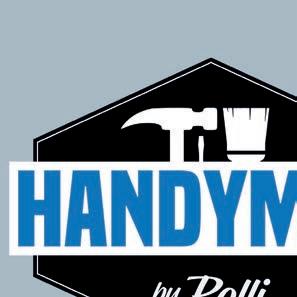


they can do so from their homes and offices, sometimes avoiding a long drive from far corners of the state, Statehouse leaders agreed in recent interviews. There are also likely more eyes on each committee’s work, they said, with each hearing streamed and archived on YouTube.
Previously, committee work was relatively difficult for the general public to access. Hearings were audio recorded, but the sound quality was often spotty and tapes hard to come by. Only floor proceedings — again, in audio form — were livestreamed, thanks to Vermont Public.
Senate President Pro Tempore Phil Baruth, D/P-Chittenden-Central, who has served in the chamber since 2011, called the changes
“one of the real silver linings of the pandemic.”
“I think what we have is a more robust process all the way around, with many more people participating,” he said. “So, it’s an ironic legacy of the pandemic — which was ‘don’t get together’ — that we now have many more people involved in the government process.”
Remote legislating wasn’t without its hiccups, Baruth said. Some meetings faced technical problems that prevented the public from viewing the proceedings live online, and lawmakers did not always halt their work in the meantime. At least one hearing, meanwhile, was hacked.
First-time lawmakers, especially, were frustrated by the challenges of learning the ropes of the job from home, missing out on the informal conversations with colleagues that are key to political work.
Others, including those legislators who work other jobs during the session, found the remote life offered a newfound degree of flexibility. In the years since lawmakers returned to the building, and concerns over the spread of Covid-19 subsided, they’ve kept some form of rules allowing one another to attend or participate in committee hearings or floor proceedings remotely.
In January, for instance, the House approved updated guidelines allowing its members to cast up to three votes remotely in committees, for any reason, for the rest of the calendar year.
House Speaker Jill Krowinski, D-Burlington, said changes to allow remote participation also make it easier for legislators who have young children, or are taking care of elderly parents, to serve in Montpelier — which she’s seen as a step forward.
“I think there’s a recognition, that we didn’t have before, that flexibility is really important,” said Krowinski, who’s been in the House since 2012. “I think that is something that’s good, and that we’ve made progress on. And I’m not sure that would have happened if it wasn’t for Covid.”
Easily-accessible video recordings have also changed the way some lawmakers approach their work in committee hearings, according to John Bloomer, the secretary of the Senate. Bloomer

BRIANA BRADY STAFF WRITER
Stan Williams, an instructional coach with Champlain Valley Union High School, started a presentation at last week’s board meeting by asking school officials and board members a question:
“Over the course of today, what interactions have you had with AI?”
Williams and three other staff members have started working on the district’s approach to artificial intelligence.
According to Williams, the group first formed a few years ago in an unofficial capacity. He was sharing office space with Charlie McFadyen, one of the school’s digital learner leaders, when ChatGPT was released, and the two began talking about how generative AI might affect teaching and what the opportunities might be. They were soon joined by librarian Katie Mack and media integrationist Gary Lambert, both of whose positions involve helping students navigate technology.
The tone of their presentation to the board was cautious but surprisingly hopeful about the potential changes to education wrought by AI.
While there’s understandable concern about generative AI’s ability to reproduce traditional schoolwork like essays, Williams and the rest of the group also said it’s becoming essential to educate children in how to use it as a tool. The district’s actions have backed this perspective: last week, the group opened access to the Google AI platform Gemini to high school students.
“You talk to your phone. You get an auto-correction on your paper. We’ve been using AI for a long time, but just without this generative piece,” Williams said.
The growing presence of artificial intelligence in our everyday lives was affirmed in the responses to Williams’ initial question. School board chair Meghan Metzler talked about how her phone, in its most recent update, had started summarizing her texts and emails. Cassandra Townshend, a board director from Hinesburg who works at the University of Vermont, mentioned how she had used AI to pull themes out of
interviews she had done with community partners that day.
Williams noted that no one in the district is an AI expert. They are learning alongside everyone else. Necessarily, a certain amount of exploration and tinkering with different platforms has informed the initial guidelines the group has put together for faculty and staff concerning artificial intelligence.
“Whereas I think initially a lot of schools wanted to go to policy immediately — can you use it or can’t you use it? —the minute you really start to play with it, you realize that that’s almost an impossibility,” Williams said.
Instead, the group has been investigating and researching what AI is good at, and what it’s not so good at, and letting the answers they find to those questions inform how they use it.
This year, Williams and Mack have held workshops with about 100 teachers and staff from across the district where they share resources, play with AI, and puzzle through how they may or may not want to use it in their classrooms.
For Williams, accessibility features like translation or voice-to-text and its ability to organize and summarize information can all be positive and effective uses.
However, generative AI also pulls from the information available to it, often replicating or doubling down on human biases or inaccuracies. Additionally, AI servers use a massive amount of electrical energy and need water to cool their systems, which impacts the environment.
For Williams and his colleagues, those negatives make an even stronger case for instructing students in assessing AI critically — what he summarized as safe, ethical, and effective use.
After drafting their initial guidelines, the group got input and feedback from district leadership and aiVermont, a nonprofit focused on ai literacy. Then, they started redrafting. They’ll probably rewrite them again in the future, as they learn more.
“It’s still going to be fluid, but what we
See AI on page 4






















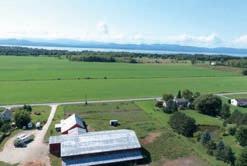






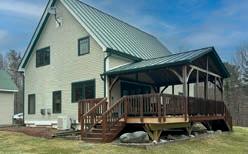


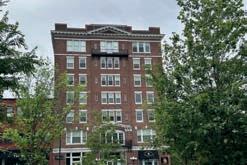





Total reported incidents: 90
Traffic stops: 2
Warnings: 2
Arrests: 2
Medical emergencies: 28
Mental health incidents: 3
Suspicious incidents: 9
Directed patrols: 36
Citizen assists: 7
Motor vehicle complaints: 2
Car crash: 4
Animal problem: 2
Noise disturbance: 2
Theft: 5
Harassment: 1
Property damage: 1
Fraud: 2
Alarms: 12
Pending investigations: 7
911 Hang-up calls: 2
March 16 at 10:50 a.m., a caller reported a loud banging noise coming from a neighboring unit at the Terraces. An officer checked the area but was unable to hear anything.
March 17 at 1:22 p.m., a caller on Shelburne Road reported a fraud complaint.
March 17 at 2:21 p.m., a caller reported a dog not being cared for properly on Ockert Lane. The animal control officer was notified.
March 18 at 2:00 p.m., a caller on Shelburne Road reported being harassed by her ex-sonin-law.
March 18 at 10:15 p.m., a 911 caller reported her son was being verbally abusive and refusing to leave her room at T-Bird Motel. Officers located the individuals involved and assisted in mediating the dispute. The male was escorted off the property.
March 18 at 10:34 p.m., a caller reported an attempted theft from their motor vehicle on Shelburne Road. A theft report was taken, and the case is pending further investigation.
March 19 at 7:41 a.m., a caller reported a theft of items from their motor vehicle on Hillside Terrace. A theft report was taken, and the case is pending further investigation.
Serving the community of Shelburne A publication of Vermont Community Newspaper Group LLC shelburnenews.com
Advertising Wendy Ewing wendy@shelburnenews.com (802) 238-4980
Advertising Director Judy Kearns judy@otherpapersbvt.com (802) 734-2928
Editor
Tommy Gardner tommy@stowereporter.com (802) 253-2101 x25
Staff Writers
Aaron Calvin
Liberty Darr
Patrick Bilow Briana Brady
Production/Design
Stephanie Manning stephanie@shelburnenews.com
Kristen Braley kristen@stowereporter.com
General Manager Katerina Werth katerina@stowereporter.com
Billing inquiries Leslie Lafountain leslie@stowereporter.com (802) 253-2101
Advertising submission deadline: Friday at 5 p.m. advertising@shelburnenews.com classifieds@shelburnenews.com
Editorial submission deadline: Friday at 12 p.m. news@shelburnenews.com
Calendar submission deadline: Friday at 12 p.m. news@shelburnenews.com
Contact: PO Box 489 Stowe, VT 05672 (802) 253-2101
March 19 at 8:17 a.m., a caller reported a theft of items from their motor vehicle on Shelburne Road. A theft report was taken, and the case is pending further investigation.
March 19 at 10:02 a.m., a caller reported a theft of items from their motor vehicle on Edward Drive. A theft report was taken, and the case is pending further investigation.
continued from page 3
did put out had a lot of eyes on it,” Williams said.
While the guidelines about how they’re using AI in classrooms may be evolving, the district held a hard line when it came to which platforms it would give students access to.
“We don’t want students to log in, because then the data platform is collecting information based on their login, which, even if it’s just their email, it’s who they are, right? It gives their name,” Sarah Crum, the district’s director of learning and innovation, said.
The federal Family Education Rights and Privacy Act prevents schools from sharing any identifiable information about students. Gemini, the Google platform the district just rolled out to high school students and faculty, does not require a login. Crum said teachers and staff are prevented from using any information about
March 20 at 11:17 a.m., a caller reported a stray dog running loose on Shelburne Road. The officer checked the area but was unable to locate the animal.
March 20 at 12:04 p.m., a caller reported a theft of items from their motor vehicle on Martindale Road. A theft report was taken, and the case is pending further investigation.
March 21 at 5:51 p.m., a caller reported a fraud complaint on Butternut Lane. A Fraud Report was taken, and the case is pending further investigation.
Note: Charges filed by police are subject to review by the Chittenden County State’s Attorney office and can be amended or dropped.
students with AI tools.
Beyond bias and privacy, Crum said that the difficulty AI presents to schools is also philosophical. She has talked with teachers grappling with AI’s ability to easily complete the tasks or assignments they’ve given their students, not because of cheating, but because it obscures the value of the task itself.
“If there is now a tool that allows people to do something so much more quickly, what does that open up for us as skill development that we should be prioritizing for students, if we no longer have to prioritize that?” Crum said.
Crum said as schools integrate AI, teachers will need to be transparent with students about when, how and why they may or may not be allowed to use artificial intelligence. For example, teachers could allow students to use AI to
create a summary but then put it away for discussion with a partner to focus on critical thinking. She compared the rise of AI to the invention of the calculator.
“The calculator meant people didn’t have to spend a lot of time laboriously doing adding and subtracting,” she said. “It doesn’t mean that we don’t teach additive reasoning and multiplicative reasoning. Kids still learn how to add and subtract and multiply because conceptually it’s a building block to understanding numeracy and mathematics and mathematical thinking.”
For Williams, this starts with helping teachers and students ask better questions when it comes to the evolving technology.
“What do you ask it to do? How do you critique it? How do you analyze it? How do you judge it? How do you innovate from it?” he said.

Two impending deadlines.
I’ve got nothing. If you don’t count an incriminating blank screen, a mocking cursor and the looming doom that the sand in my hourglass is a granule away from Alarm-ageddon. My emotional response to writing paralysis.
Although, mine’s more of a blockage. A constipation of words that, no matter the amount of straining, refuse to come out.
while I yelled out, “It’s empty!”
Or maybe it’s politics? Who doesn’t feel miasmic malaise from all the terrible news? Surely, that’s got to be it.
At a loss, I invoke the ancient goddess of writing, Seshat. First, though, I begin with offerings of commiseration. Who wants a name that ends with the past tense of expelling feces? That’s a bum rap.
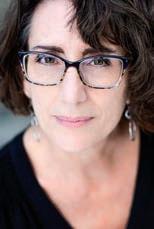
I’m left with two choices. Go back to bed or blame someone. Or something. I’m all about equal opportunity blaming. How about my Covid diagnosis last month? Maybe I have brain fog?
Or maybe it’s my husband, who incessantly clanged a knife inside a barren peanut-butter jar
Thoth, her male counterpart, has a better name. He also has the head of a baboon. Another lesson in “We can’t have everything.”
I barely hear Seshat’s whispered counsel, “The universe has had enough of your words, thank you very much, don’t call us, we’ll call you.” That can’t be right! It’s not very goddess like. But then, I worry, what if it’s true?
As I stare over the cliff of devastation down into the valley
of despair, where former wordsmiths slog around with dead laptops saying to no one interested, “I used to write,” I think how easy I had it in the past. Oh, how far away yesterday seems. Back then, words came easy.
I’m not saying the results were Didion, only that the tap of inspiration was a spigot wide open. Words never took a vacation, decided to retire or left me for some younger writer. No. Even when I had nothing to say, my fingers on the keyboard always did.
From there, I’d have pages to edit — for that’s the real work of writing. Everyone says they want to be a writer, but nobody says, “My dream is to write a bunch of gobbledygook and then spend interminable hours encouraging hemorrhoids and headaches by editing a handful of measly pages I suffered over, to then ask, ‘Who wrote this crap?’ while the rest of life goes to hell, because who has the time to pay bills, wash dishes or change underwear when the

Grim Reaper of Deadlines wields a scythe with an embedded stamp that will slash and stomp my freshly edited piece in blood-red ink: ‘Rejection!’” Anyhoo. That’s my writer’s life. And I love it.
Maybe I should blame my laptop? Not that I don’t appreciate it. Everyone knows the delete key is more enjoyable than an eraser, especially when entire paragraphs beg to die.
Stephen King advises us to “kill our darlings.” He has no idea the ruthlessness that occurs on my desk. I murder pages of pablum so lackluster I consider quitting to become a plumber. It’d be similar to writing, as there’d still be crappy days, paper jams and laying lines. Plus, a big upside, finally: rationale for my plumber’s crack.
Perhaps I’d name my business Vowel Movement and call myself a “Water Distribution Operator?” Might as well employ creativity somewhere.
It’s my fault I dally on my computer. One minute I’m deep
in prose, pausing merely to search online for a synonym of “cheese,” and before I know it, I’m reading a list of every cheese in the world, followed by a viral video of a cheese eating contest, to then find myself watching a clip about the art of pastry-making, which weirdly causes me to bra shop.
I know, I shouldn’t click any links. What do they say? The road to hell is paved with good… oh, sorry, I was distracted by this monkey in overalls answering a phone. It’s unbelievable! I mean, when’s the last time you saw an old rotary-dial telephone?
I checked back in with Seshat about this plumber business, and whether I should apprentice for The Plumb Eyed Pipers or The Crapper Dappers? After she stops hysterically laughing at me (and reminding me of my fear of drain snakes), she says I misheard. Turns out she was telling me that the universe has
Max Pogacar is the Bar Manager at Frankie’s: A Vermont Restaurant in downtown Burlington. Over the last two decades, Max has worked at The Great Northern, Prohibition Pig, Leunigs, and Juniper at Hotel Vermont; now he curates the program at Frankie’s with owners and Hen of the Wood Alumni, Cindi Kozak and Jordan Ware.
Crash report perpetuates stereotypes of victim
To the Editor:
I recently read the article about the death of Sean Hayes on Shelburne Road after he was struck by a Shelburne police officer (“Police: Unsafe passing led to fatal Shelburne cruiser/bike crash,” March 6, 2025). Sadly, I found Mike’s article inaccurate and biased.
We will never know for sure exactly what happened that early morning, and assuming the best of the police officer and the worst of the victim perpetuates stereotypes and offers nothing in terms of fair reporting.
My understanding from court proceedings is that there is reason to conclude the officer was distracted as he had a YouTube video up on his screen. The line “It is unclear what (prosecutor Sarah) George plans to rely on for the criminal charge” implies doubt in the state’s attorney’s judgement to charge the officer. Reporting that the victim’s headlamp was not operating when seized while it was working when seen on a nearby business video camera is a curious inclusion. My inference is that the reporter is insinuating that the circumstances were the problem, not the tragic mistake by the officer.
This sense is reinforced by the reference to Sean’s family’s report that it was not uncommon
for Sean to ride his bike late at night and that he sometimes “dumpster dived” during this time. Help me understand what this has to do with this event. There was no dumpster or diving involved. Perhaps the reporter wants us to imagine Sean in a certain light. In full transparency, I have known the Hayes family for many years. They are, and he was, people full of love and caring for others. While it is true that Sean led a more complicated life, including some unusual habits due to a head injury, it is also true that Sean was a deeply caring person, family member and father. He was incredibly handy, knew how to fix things and knew how to be safe. That he would pull to the far side of the road to a well-lit area in order to fix his bike/trailer seems like thoughtful behavior. Offering that kind of information might have offered a more rounded perspective about this young man.
As mentioned, we’ll never know for sure what happened that night. What we do know is that fair reporting would have left us wondering, open to the facts as they unfold, and trusting in our justice system to get as close to the truth as possible. Sadly, this reporting did not move us in that direction.
Tim Wile South Burlington
Guest Perspective
Lindsay Kurrle
Too often in Vermont, popular and necessary housing construction is derailed, delayed or diminished by a small number of folks abusing the appeals process who have no direct skin in the game and are reluctant to welcome new neighbors.
While appeals are valuable in certain cases, they also drive up costs, affecting every homebuyer, renter and builder in Vermont. When the project involves public money, appeals also drive-up costs for taxpayers.
The Alice Holway Drive Project in Putney is an example of all those things. Windham & Windsor Housing Trust and Evernorth are working to build 25-units of mixed income apartments there. Funders include the Vermont Housing and Conserva-

WHEN DID EIGHTEEN YEAROLDS GET THE RIC:,HT To \/OTE? 2GT11 AME.NDMENT. 1971.

WHAT CAR WAS '\UNSAFE AT At\lY SPEED''?

Wl-lERE. DID FRED FLINT.STONE ATTEND COLLEbE?

tion Board, the Vermont Housing Finance Agency and the Vermont Department of Economic Development’s Community Recovery and Revitalization Program, all of which fund projects with taxpayer dollars.
The housing project is within walking distance of the Putney Community Garden and Putney Farmers’ Market. It’s in a Designated Village Center. It will offer residents access to public transportation and nearby amenities and services. And, according to Windham & Windsor Housing Trust, “deed restrictions are put in place to ensure that the mission of affordability remains permanently.”

Vermont Supreme Court rejected their fourth and final appeal last November, clearing the way for construction.


The Alice Holway Drive project has been in the works since March 2022 and is expected to finally break ground this spring after delays largely attributable to four appeals filed by two Putney residents. The
Elizabeth Bridgewater of Windham & Windsor Housing Trust tells the Vermont Agency of Commerce and Community Development that, while there have been substantial design changes to simplify construction and save money, legal fees and increased construction costs during the three-year delay raised the hard construction budget by over $2 million. That’s about $80,000 more per apartment today than it


would have cost had the project not sat idle for three years due to appeals.
Other changes during that time also increased costs.
Half measures or minor tweaks will be insufficient.
Meaningful reform of the appeals system is needed immediately.
Most notably, construction loan interest rates have more than doubled. Once again, this is an increase that could have been avoided had this project broken ground in 2022 instead of 2025. Today the overall price tag for this 25-unit mixed income housing development now sits at $15.4 million.
It is completely unacceptable to allow two people to deny

dozens of others housing while simultaneously reducing the impact of investments made by all Vermont taxpayers.
This is not just a Putney problem. The outdated appeals process championed by some is worsening the housing crisis by denying homes to Vermonters in the throes of a crisis, eroding the impact of taxpayer dollars designated by lawmakers to build affordable housing and discouraging private investment, without which Vermont cannot achieve its housing goals. Consider the numbers. According to the Statewide and Regional Housing Target Report, the Windham Region, which includes Putney, needs 2,500 to
See KURRLE on page 9
Guest Perspective
Gov. Jim Douglas & Lisa Ventriss
Vermonters don’t always agree with each other on important issues: “Who boasts the best woods skiing?” “Which cheese makers produce the best aged cheddar? “Where to find the best maple creemee?”
There is one trend, however, that has bridged our other cultural differences, and that is the gob smacking cost of health insurance premiums in Vermont. At double the national average, publicly available data show that Vermont is out of line with our peers and our hospitals are spending too much on management and administration. Vermonters find their economic growth stunted, many are under- or uninsured, and business and school budgets must cut personnel and services to absorb double-digit insurance increases. So, what is driving this unsustainable trend? Almost half of Vermont’s total health care spending (44.5 percent) is hospital costs, so this is where to look for opportunities for reducing costs, increasing efficiencies, and improving quality. Vermont’s 14 hospitals and health systems range from the largest, UVM Medical Center, to the smallest, Grace Cottage. All have financial challenges, but some perform better than others. Because it is the largest, it’s especially important to dig into the data to understand the drivers of UVM’s financial performance. When benchmarked against Medicare reimbursements, national data show us that three-quarters of the 107 university-based academic medical centers in the U.S. break even
continued from page 5
had enough blame — thank you very much, don’t blame us, we don’t blame you. Wow. That’s mighty gracious of our universe, especially to a planet of people who created global warming, “The Bachelor,” and Flamin’ Hot Doritos.
Not one to slough off otherworldly advice, I consider her message. What if blame is useless? It’d certainly curtail arguments, like the ones inside my head. I’m a blame-machine when it comes to self-judgment. Sure, first, I look outward
or make money when treating Medicare patients. UVM Medical Center, on the other hand, loses $119 million a year treating Medicare patients. The UVM Health Network does not dispute these trends, but it does try to explain them away and claim Vermont’s population is the cause. Vermont’s aging population is still younger than that of Maine, yet the Maine medical system is close to breaking even on Medicare reimbursements. What else might it be?
Another disturbing trend is that within the academic medical center cohort, UVM reports the 14th highest non-patient labor costs. These include custodial services, information technology, food services, human resources, and of course, administration and management. To its credit, UVM’s labor costs for direct patient care are on par with their peers, just one percent above the average. However, overall, its non-patient labor costs are 31 percent above their peers. And when we parse out administration and management labor costs, the average for 106 other academic medical centers would have to increase by 73 percent to be as high as UVM.
We need to understand what is driving this anomaly compared to other academic medical centers. And it’s not simple because UVM Health Network finances are consolidated with those of UVM Medical Center, making it difficult to understand the true carrying costs of the network.
Plus, there’s the significant question of UVM Health Network costs to support the delivery of care at the three New York hospitals owned by the network.
As consumers of healthcare
services and Vermont taxpayers, we are literally paying the costs of an inefficient health network. And we should be concerned that quality is slipping too — last year Medicare downgraded UVM Medical Center to four stars, where it previously had five, the highest rating.
We must ask the obvious question: are Vermonters’ health insurance premiums paying for New Yorkers’ health care? And is UVM Health Network leadership tone deaf when forced to reduce spending by the Green Mountain Care Board? After all, the network first sought to eliminate patient services and then handed out $3 million in yearend bonuses. Such a top-heavy, entrenched organization cannot be sustained by Vermonters or the commercial insurance industry.
The coalition members of VT Healthcare 911 support the Green Mountain Care Board in its mission to drive systemwide improvements in access, affordability and quality to improve the health of Vermonters. Currently, there is no audit of hospital budgets that would provide insight into the vagaries of financial reporting by hospitals and health systems. Perhaps it’s time such a thing was standardized in Vermont. Perhaps it’s time for reference-based pricing, which would drive hospitals closer to Medicare reimbursement rates. It is definitely time for Vermonters to raise their voices to call for action in this biennium.
Former Gov. Jim Douglas and Lisa Ventriss, president emerita, Vermont Business Roundtable, are co-chairs of the VT Healthcare 911 Leadership Council.


for who’s at fault, but that’s a knee-jerk reaction after growing up with a dad who accused me of stealing his toupee. As if a ten-year-old wanted a wig that resembled a dead hamster.
Maybe Seshat is advising me to cool my jets. After all, she’s also a goddess of wisdom who wears leopard print. How can I not pay attention to her? Seshat’s also known for placing ethereal copies of authors’ work in “the library of the gods,” thus, making “mortal writing” immortal. She’s playing the long game.
Maybe she’s signaling that writer’s block is no big deal? That, without blame, there’s simply returning to work when you’re ready. I feel called to don my leopard pants for a date with my laptop. But first, for her sagacity and loving the written word as much as I do, I’ll give offerings of gratitude. I wonder if she likes Flamin’ Hot Doritos.
Carole Vasta Folley is an award-winning columnist and playwright. Visit carolevf.com.






St. Catherine of Siena and Age Well are teaming up to offer a luncheon on April 8 for anyone 60 or older in the St. Catherine of Siena Parish Hall, 72 Church St. in Shelburne. The check-in time is 11:30 a.m., and the meal will be served at noon. There is a $5 suggested donation.
April 8 menu: baked ham with raisin sauce, sweet potatoes, Capri blend vegetables, a wheat dinner roll, and Easter cake with icing and milk.
The deadline to register for April 8 is April 3. Contact: Molly BonGiorno, nutrition coordinator, at (802) 662-5283 or email mbongiorno@agewellvt.org.
Pianist Steven Osborne will perform at the Mahaney Arts Center’s Olin C. Robison Concert Hall on Friday, April 4, at 7:30 p.m.
Osborne’s performances exude an immense depth of musicality and exceptional refinement of expression across diverse repertoire, be it in Beethoven or Messiaen, Schubert or Ravel, Prokofiev




or jazz improvisations.
The first half of the concert features classical works, with two pieces each by Debussy and Schumann. After intermission, Osborne pivots to contemporary programming with works by Marion Bauer, Meredith Monk and Frederic Rzewski, plus his own rarely heard improvisations and transcriptions of works by jazz greats Keith Jarrett, Bill Evans and Oscar Peterson.
“My view of classical music has been deeply affected by my improvising experiences: they helped me feel viscerally how much the mainstream classical repertoire comes out of improvisatory traditions,” Osborne said. “I found that when I opened up to the process of improvising, I suddenly kept seeing implicit spontaneity in the composed pieces I was playing, and that in turn helped me find a much deeper sense of drama, of shape, and of freedom.”
Tickets are $25 for the general public, $20 for Middlebury faculty, staff, and alumni, $10 for youth and $5 for Middlebury College students. More information, go.middlebury.edu/freetickets.
The Mahaney Arts Center is located on the campus of Middlebury College, at 72 Porter Field Road, just off Route 30 South/S. Main Street.
Fifty teams of elementary, middle, and high school students from across Vermont will gather Saturday, March 29 at the Blue Ribbon Pavilion at the Champlain Valley Exposition, 105 Pearl Street, Essex Junction, for the 17th annual Junior Iron Chef event, the premiere culinary competition hosted by Vermont Afterschool.
With names like Lettuce Cook, Spice Girls and the Eggsperts, the teams have been busy preparing for the competition, spending their time in afterschool programs researching and testing potential recipes with local and seasonal foods.

On March 29, they’ll work together to create healthy dishes that inspire their school meal programs as part of the Farm to School efforts in the state. Local judges will lend their taste buds to determine winners for the CrowdPlease, Lively Local, and Mise En Place awards.
“Youth love to cook and show off their skills, but most often, we hear from youth that the program
helps them with other skills, including leadership, teamwork, problem solving, and meeting new friends,” Vermont Afterschool executive director Nicole Miller said. “We like to say that Junior Iron Chef VT is a recipe to empower youth.”
Nearby schools and afterschool programs with teams include Cambridge Elementary School; Camels Hump Middle School in Richmond; Champlain Valley Union High School; Christ the King School in Burlington; Crossett Brook Middle School in Duxbury; FH Tuttle Middle School in South Burlington; Hunt Middle School in Burlington; Lake Champlain Waldorf School in Shelburne; Shelburne Community School; and Peoples Academy Family-friendly activities for spectators include crepe spinning, a smoothie bike by City Market, seed planting and composting, a photo booth and sugar on snow.
Schedule:
• Morning heat cooking competition, 9:30-11 a.m.
• Afternoon heat cooking competition, 1-2:30 p.m.
• Awards ceremony and photos follow each session.
Shelburne’s Pierson Library presents the second installment of its Art Exchange Program with “Ephemeral Meditations” on Sunday, April 6 at 2 p.m. The show features artists Kurt Budliger, Bruce Hathaway and Allen Aardsma.
Hathaway is an award-winning Vermont-based sculpture artist whose metal creations glimmer under the changing light of day. With over 45 years of experience, Bruce’s work can be found in galleries, public spaces, and sculpture parks across Vermont, New Hampshire, Maine, Ohio and Michigan (sculpturedmetals.com).
Budliger is a conservationist and photographer whose high impact imagery has appeared in well-known publications like Outdoor Photographer, Popular Photography, National Geographic Adventure, Outside Magazine, Vermont Life Magazine, Eastern Fly Fishing, Patagonia, The Nature Conservancy and many more (kurtbudliger.com).
Aardsma found his passion for wood carving at the age of 10
Mary Jane Allen Cain
Mary Jane Allen Cain, 98, died peacefully on March 17, 2025, at the University of Vermont Medical Center, surrounded by her loving family.
She was born March 24, 1926, in Burlington, daughter of James and Irene Allen. Mary Jane grew up on Summit Street in Essex Junction and graduated from Essex Junction High School in 1944.
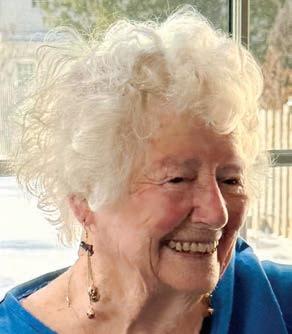
She entered the U.S. Cadet Nurse Corps in 1944 and graduated from Lenox Hill Hospital in New York City, as an RN, participating in the Cessation of World War II celebration in Times Square in New York City. She returned to Vermont to marry her beloved husband, Francis J. Cain, of Burlington in 1947. They were married for 71 years, until his passing in 2019.
During a busy married life as a mother of 10 children — and First Lady of Burlington from 1965-1971 — Mary Jane created an open-door home for all, as there was never a dull moment in the Cain household on Bilodeau Court. The dinner table was a daily forum for coming together to talk about the day and what was going on in the world. The phone was taken off the hook to keep this time uninterrupted. No one could eat until everyone was served and the prayer was said. She had a special gift in not only feeding 12 people on a budget, but she was also creative enough to stretch a meal to include any unexpected guest.
Once all the kids were in school, Mary Jane returned to her early passion as director of Nursing at Trinity College in Burlington. In addition, she was active in the Democratic Party; former president of the Burlington Garden Club, which she stayed active in until her death; an avid golfer at the Burlington Country Club; a member of the Bridge Club, Happy Hookers Sewing Club and Red Hat Society of Burlington and Ft. Myers; and a volunteer at the Shelburne Museum, Rokeby Museum and Hope Hospice.
She and Francis enjoyed traveling the world; she wrote a family cookbook, “These
Falling Leaves;” spent years researching her family’s genealogy; and enjoyed gardening, writing, painting and spending time with her family and many grandchildren and great grandchildren. She particularly loved the special place she and Francis created at their beloved “Farmhouse” in Stowe, where countless family gatherings and celebrations were cherished over the past 50 years.
Following the passing of Francis, Mary Jane lived at Shelburne Bay Assisted Living, where she “met a new friend every day.” The Cain family cannot say enough about the love and care given to her by the entire staff.
She was predeceased by her husband Francis (2019); daughter Betsy (2020); son Michael (2021); infant great grandchild Sophia Hokanson (2023); her parents; sister Virginia Allen Wallace; brother James H. Allen Jr.; brother-in-law Dr. Nolan Cain and wife Mary; Judge L. John Cain and wife Polly; and sister-in-law Mary Virginia Cain, Sister of Mercy.
Mary Jane is survived by her family: Michael’s partner, Joanne Wells of Fairfax; William Cain (Marilee Abair) of South Hero; Carolyn Cain Breiner (Thomas) of Swanton; Thomas Cain (Clarissa Holmes) of Sharon; Martha Cain of White River Junction; Patricia Cain Haynes (Michael) of Stowe; Betsy’s husband, Theodore Nelson of Fairfax; Susan Cain O’Brien (William) of Winooski; Barbara Cain Cousins (Glen) of Burlington; Brian Cain (Lilli Bashara) of Montpelier; 27 grandchildren; and 36 great grandchildren, with three more on the way. Mary Jane is also survived by her brother Skip Allen of Isle La Motte, and many nieces and nephews.
Visiting hours will take place at Lavigne’s Funeral Home in Winooski, on Thursday, March 27 between 4-6 p.m. A mass of Christian burial will be celebrated Friday, March 28 at 11 a.m., at St. Catherine of Siena Church in Shelburne. In lieu of flowers, donations in Mary Jane’s name can be made to Mercy Connection, 225 So. Champlain St., Burlington, VT 05401.
continued from page 6
3,700 additional homes by 2030. Fighting for three years to block 25 units is no way to get there.
It’s undeniable that Vermont needs more housing options. We need them for young people just getting their start, families with school-aged children, older people looking to downsize, individuals and families experiencing homelessness, workers who drive our economy and people who want to move here and share the Vermont experience with us.
Lawmakers are understandably focused on education finance reform, but that can’t be at the expense of housing. Inaction will waste even more taxpayer dollars and prolong our housing crisis instead of solving it. Half measures or minor tweaks will be insufficient. Meaningful reform of the appeals system is needed immediately.
Gov. Scott’s PATH for Vermont housing proposal outlines several strategies that would create more housing. Here is what we are proposing when it comes to
appeals reform:
• Reduce frivolous appeals by requiring appellants to show how their property is affected by the alleged violation of land use regulation or comprehensive plan.
• Raise the threshold for petition appeals from any 20 people to 20 percent of the municipality.
• Require Vermont Superior Court to hear residential housing appeals within 60 days.
• If the court rejects the appeal, the appellant may be liable for up to $50,000 of developer’s legal fees.
I urge you to contact your legislators today. If we can make meaningful appeals reform, we can add to Vermont’s housing stock more quickly, make affordable housing even more affordable and give taxpayers a better return on their housing investments.
Lindsay Kurrle is secretary of the Vermont Agency for Commerce and Community Development.



FREE! RSVP here: Walk-ins welcome!
Presented by: For accommodations, contact fhp@cvoeo.org or (802) 660-3456 x110


More info & full event calendar: fairhousingmonthvt.org

Thursday • April 3 Fletcher Free Library 235 College St. Burlington
5:30-6pm Voices of Home Storytelling Exhibit & Reception 6-7:30pm Deconstructing Historical Patterns & Reimagining the Future of Housing
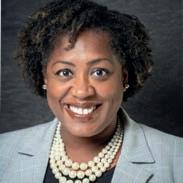










The Outside Story
Laurie D. Morrissey
In early spring, a reddish haze appears in the woodlands. With most deciduous trees still dormant, the red maples are living up to their name. Their awakening buds lend color to a gray landscape and signal that spring is coming. I love watching the steady progression of red as I look out my window. A few weeks after the buds redden, they will break into flower, offering bees and insects a critical early source of pollen and nectar.
Red maple (Acer rubrum) is one of the most common native trees in eastern North America. Often called swamp maple, it thrives in wet areas such as bog edges and wetland margins. For this reason, it’s sometimes considered a “sister species” of silver maple (Acer saccharinum), a flood-tolerant species common along rivers. But several characteristics set these two apart.
The reason red maples are so widespread and abundant is that they are generalists. They can establish and grow in a wide range of habitats and site conditions, from urban settings to upland forests to swamps. They are medium-sized trees that are relatively fast-growing and typically reach 40-70 feet. They prefer moist, acidic soils, although they can do well in the compacted soil of urban parks and neighborhoods.
The buds, flowers, emerging leaves and twig stems are red. Even the fruit, the two-winged samara nicknamed “spinners,”
are tinged with red. Though the leaves become green soon after emerging, it isn’t long before the red returns: they are among the first trees to show autumn colors, turning red again as early as mid-August.
Red maple is increasing in abundance in the Northeast, and its ability to live in a variety of conditions makes it likely to be a “climate winner.” These are resilient species that will continue to do well in the future.
“It provides critical ecosystem services like pollinator benefits, wildlife habitat, and soil nutrients from leaf litter, as well as maple syrup and other traditional forest products, so it’s a very important tree species for our northeastern forests and beyond,” Nicole S. Rogers, landowner outreach forester with the Maine Forest Service, said.
Because red maples can adapt to diverse growing conditions and climates, they are likely to become more valuable for syrup production. According to maple scientist Abby van den Berg, they may help ensure the resiliency of the industry. Though red maple sap has a lower sugar concentration than sugar maple sap, it produces copious amounts, and its flavor is nearly indistinguishable from that of sugar maple sap.
Silver maple also breaks bud early in spring. Stands of silver maple, which can survive weekslong seasonal flooding, often dominate floodplain forests, with their arching branches forming a dense canopy above a ground cover of sensitive fern, ostrich fern and other herbs growing in
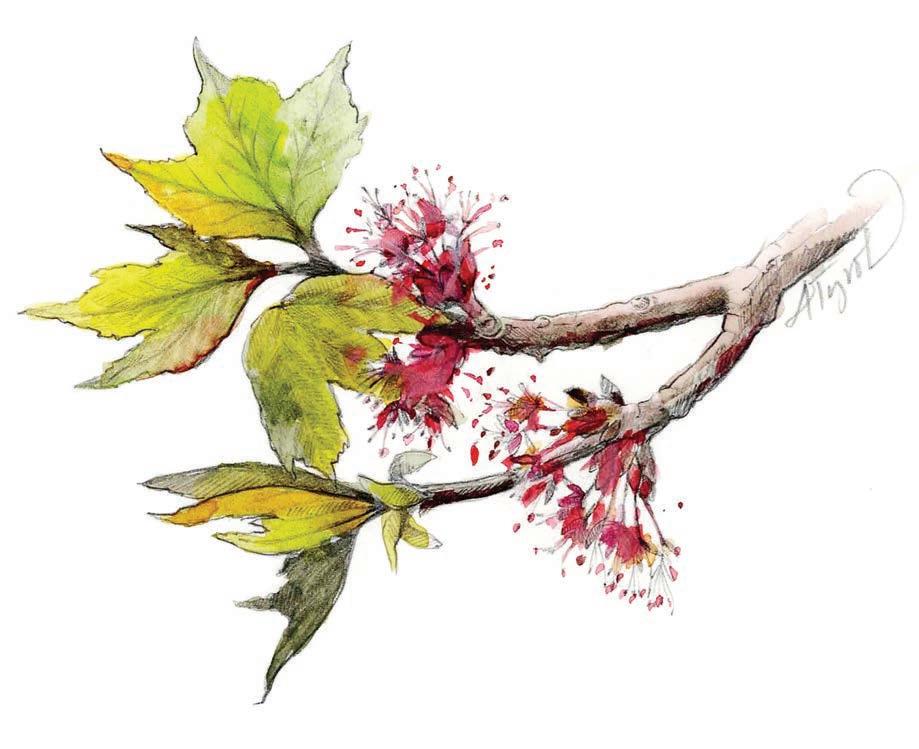
the rich, silty soil.
“Some of the most beautiful silver maple forests I’ve ever seen are in the St. John River Valley of northern Maine,” Rogers said. These forests harbor countless species, including rare and endangered reptiles such as wood, spotted and Blanding’s turtles. The cerulean warbler, which has declined steeply over its entire range, is closely associated with these forests, and the soft wood of silver maples is ideal for cavity-nesting birds such as barred owls and common goldeneyes.
Unfortunately, large intact floodplain forests have become uncommon. Only fragments of
floodplain forests remain in areas where they were once extensive. Often, these tracts of land are converted to agriculture or overrun by invasive species.
While red and silver maple have much in common, they are easily differentiated. Silver maple trunks often divide into separate stems close to the ground. The leaves of both species are silvery underneath, but they differ in size and shape. Red maple leaves typically are about four inches in diameter and three-lobed, while silver maple leaves are about six inches in diameter and have five deeply cut lobes.
Of all our native maples, red
has the smallest samara (less than an inch long), and silver has the largest (two inches long). In fall, silver maple leaves usually turn yellow. As I watch the red maples redden, what I appreciate most about this harbinger of spring is their hue. But then, I’m not a bee.
Laurie D. Morrissey is a writer who lives in Hopkinton, New Hampshire. Illustration by Adelaide Murphy Tyrol. The Outside Story is assigned and edited by Northern Woodlands magazine and sponsored by the Wellborn Ecology Fund of New Hampshire Charitable Foundation: nhcf.org.



continued from page 8
with only a small jackknife. With more than 200 species of birds and animals in his repertoire and over 3,000 individual carvings completed, Aardsma brings sensitivity and tender appreciation to his subjects (pondsidestudio.net).
The April 6 opening will be accompanied by refreshments, a nature-themed treasure hunt for kids and free tickets for raffle prizes.
Attorney General Charity Clark wants to hear young Vermonters’ thoughts on the environment. For the fifth year in a row, the office is holding an Earth Day Essay Challenge for Vermont students to submit essays, and this year, it is expanding to include fourth graders.
“I always look forward to seeing the enthusiasm that young Vermonters have for the environment and the many thoughtful, creative ways they express that in their writing,” Clark said. “These essays provide hope for the future. I also really appreciate the teachers who inspire and support these students in their work.”
The Earth Day Essay Challenge is open to any fourth, fifth, or sixth-grade student in Vermont, including home-schooled students and runs until April 16. Students can submit other types of writing instead of an essay if they would like.
Ideas for topics include things like: What do you love about Vermont’s environment? How do you enjoy Vermont’s environment? What do you care most about and what does Earth Day mean to you? What are your concerns about the future of
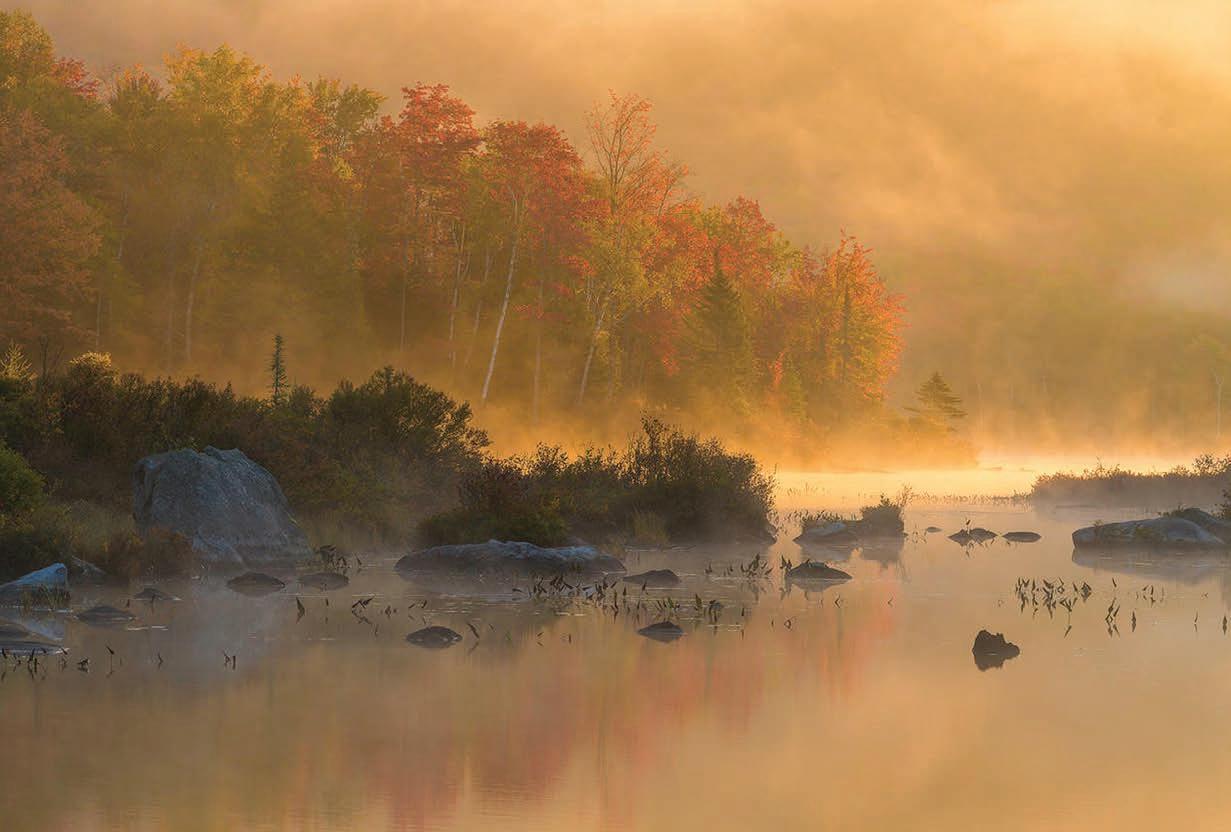
Vermont’s environment? What do you think we should do to help protect the environment?
Participants do not need to cover all these topics — these are just ideas.
All submissions will be posted on the Attorney General Office’s public website for Earth Day 2025 on April 22. Posted essays will include a participant’s first name and school. Please indicate with your submission if you prefer that your essay not be posted.
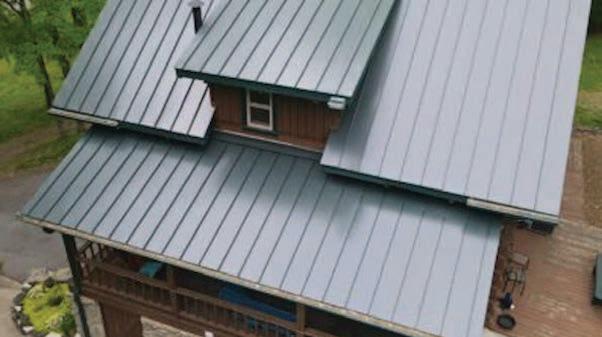


Participants will receive a note about their essay from a member of the Environmental Protection Unit and will be entered in a drawing to have Clark speak with their classroom after the essay
challenge is over. Environmental attorneys are also available to speak with any participating class about the environmental work of the attorney general’s office during the essay submission period.
For more information on the Attorney General’s Earth Day Essay Challenge, including how to submit your essay, visit tinyurl. com/4f3axrjv.


The team from Champlain Valley Union High School secured the state high school academic championship and the team from Mt. Abraham Union High School took home the small-school state championship on Saturday, March 22, as the Vermont-NEA Scholars’ Bowl held its final day of competition at Montpelier High School.
CVU capped a run of four comfortable wins at the March playoffs with a 420-265 victory over South Burlington. The Redhawks also swept through the first set of playoffs in January, meaning they secured their second straight state championship and fourth overall without needing to play a championship match.
Competing members of the CVU team were Jacob Graham, Zoe Mui, Charles Redmond, Leah Rauch, Wylie Ricklefs and Grace
Warrington. The team is coached by John Bennett and Kiran MacCormick.
Mt. Abraham also successfully defended its crown as smallschool state champion, securing wins over rivals Montpelier and Lyndon to finish highest among eligible schools Saturday. Like CVU, the Eagles finished first on both playoff dates, so a championship game was not required to earn its third overall small-school title.
A state championship match was needed in the JV tournament, however, as South Burlington B went 4-0 in Saturday’s round to force a showdown with January winner CVU B. South Burlington B claimed the crown by coming out on top in a back-and-forth match that finished 220-215.
Essex High School took home
Saturday’s other trophy, claiming the Medlar Cup for showing the most improvement over the January playoffs after coming in third overall.
CVU will participate in the NAQT National Championship Tournament in Atlanta on Memorial Day weekend, while Mt. Abraham will likely attend the NAQT Small-School National Championships in the Chicago suburbs in late April.
Scholars’ Bowl is a question-and-answer quiz competition, similar to “Jeopardy!” but featuring teams of high school students and with a heavier focus on the academic curriculum. The tournament has been held annually since the 1983-84 school year and is sponsored by the Vermont-National Education Association.
continued from page 1
In literature put together by Shelburne’s affordable housing task force, the group cites teachers specifically as a group unable to afford the housing prices in town. Under the current contract, the base pay for a new teacher in Champlain Valley School District with a bachelor’s degree is $51,355.
That increases every year and with further education — if that same teacher earns a master’s degree and stays in the district for 10 uninterrupted years, their salary would become $81,141 under the current contract.
However, the median listing price for a home in Shelburne is over $900,000 dollars, out of reach even for more seasoned teachers who are higher on the pay scale.
According to Marckres, developing teacher housing on the plot owned by the district is
still very early in the planning process. Oldivai has provided a market analysis, but the company and district still must do a needs assessment and a feasibility study, bringing the town and other stakeholders in the district into the conversation.
Should the project continue, the initial idea is for Oldivai to build between 100 and 130 modular units. Marckres said the district, as the landowner, may become an equity stakeholder in the development and have the opportunity to subsidize the cost of housing.
“We’re not looking at this as a major income generator. We’re looking at this as a partnership to fill a need,” Marckres said. “And potentially some affordable housing that could be part of a of an employment package that would keep us competitive for staffing into the future.”
Here’s what Shelburne Parks and Recreation has coming up for activities.
• The Shelburne youth lacrosse deadline for boys and girls in grades K-2 is March 31, with a $15 fee after that. Parent volunteer helpers are needed for this level and can sign up at time of registration.
The kindergarten program will provide a basic skills introduction to our youngest players in a safe and controlled environment. Players will enjoy a fun clinic from 8-9 a.m. on Saturday mornings. This program starts May 3and ends June 7. A mini stick is included in the price of registration! Mouth guard is recommended.
tion cost is $35. Mouth guard is recommended.
Online Registration can be found on the parks and recreation website, shelburnevt. org/160/Parks-Recreation, or paper forms are available to print off the website and available at the office. Scholarships available if needed. Call 802-985-9551 for more information.
• Davis Park Community Gardens: Located next to the Natural Playground at Davis Park on School Street, these are raised bed gardens designed to provide better accessibility for those that may need it. The plots are much smaller than those at LaPlatte. Water is available on site. Gardening is organic only — no pesticide or chemical use.

The grade 1-2 program is designed to give the basic skills to these young beginners in a safe, controlled environment. Players will practice on Wednesday evenings from 5:30-6:30 p.m. and then will be split into teams for small, sided games on Saturday mornings from 9-10 a.m. This program starts on April 30 and ends June 7.
Registration, $60, includes mini stick. Uniform fee, $15


If you already have a mini stick from last year and don’t want a new one, the registra-
Applications are now being accepted at the recreation office. Plots will be assigned in early April with planting starting in early May. Priority will be given to those who have accessibility needs, until March 31.
Plot costs are $20, for an 8 feet-by-3 feet, 30-inch-high bed; and $25 for and 8 feetby-4 feet, 24-inch-high bed. Check out all summer camps, youth and adult classes, and upcoming special events at shelburnevt.org/160/ Parks-Recreation, or call the office at 802-985-9551.
said some, in his view, seem less inclined to speak candidly than they were in the past.
“I don’t think you get the exact same debate you used to,” said Bloomer, himself a former senator who’s had his job as the chamber’s top rule-keeper and counselor since 2011.
Before the cameras were in use, “being around a good committee was like being around a kitchen table in a Vermont family. When you discussed things, sometimes you’d say really stupid things, and sometimes you (didn’t),” he continued in an interview. “I think people are a little more hesitant, given all the broadcasting, to actually discuss in front of the live cameras.”
The flip side, Bloomer acknowledged, is that the technology makes it easier for the public to hold lawmakers accountable for what they say. A common scene in the Statehouse includes reporters, as well as lobbyists, hunched over laptop screens watching YouTube recordings of live or past proceedings — sometimes while others are taking place in front of them.
Rebecca Ramos, a lobbyist with the Montpelier-based Necrason Group, called the remote access “amazing” — though said it sometimes discourages advocates from attending hearings in person, where it’s easiest to impress on lawmakers and pick up on their many reactions.
Ramos encourages her clients to come into the Statehouse whenever they can.
After years of Zoom work, “we basically had to retrain our clients,” she said. “Like, no, you don’t get to stay home on Zoom. If you want this change to happen,
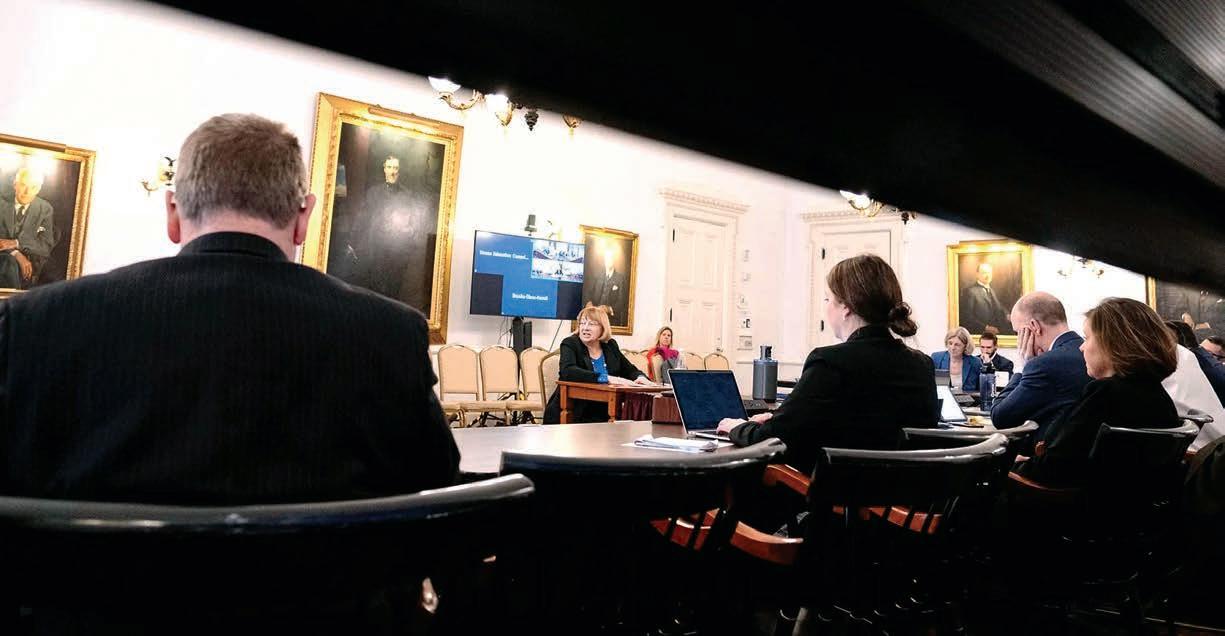
a part-time year round caretaker in Shelburne.
you have to be in the building.”
The return of in-person legislating brought its own challenges, too. Vermont’s Statehouse is notoriously short on space, with cramped committee rooms that were prone to spreading disease even before considerations over airflow and ventilation were commonplace.
(Officials have been in the process of overhauling the building’s HVAC system in recent years, though those plans predate the pandemic.)
In late 2021, lawmakers ordered the Statehouse’s sergeantat-arms to impose room capacity limits ahead of their planned return to the building. But those limits later sparked criticism
from leaders of news organizations across the state when several reporters were turned away from covering committee hearings in-person, because the rooms had reached their limits.
Legislative leaders increased some committee room limits shortly after in response.
Concerns over disease-spreading also prompted lawmakers to shuffle some committees around the building to rooms that offered more space — including two large rooms on the building’s first floor, Nos. 10 and 11, that were previously used for many public meetings.
Covid-19 also renewed conversations about longstanding proposals to expand the foot-
print of the Statehouse and create new committee rooms and other public spaces. Progress toward an expansion has been slow, with a legislative panel last fall sending one proposal back to the drawing board over concerns its roughly $11.5 million cost was too high, WCAX reported.
It wasn’t until this year that House committees moved out of rooms 10 and 11, after two new committee rooms were built out on the building’s mezzanine level. Baruth, the pro tem, said he thought that returning those rooms to public use also brought back a sense of normalcy.
“To me, that’s really the bookend of the COVID era — is those rooms coming back,” he said.
Responsibilities include maintaining security, building and property maintenance oversight, and other maintenance support for owners of a property on Lake Champlain. One to two days a week depending on seasonal and work demands. Provide resume and/or statement of relevant experience and skills along with contact information to PO Box 129 Shelburne, Vermont 05482. Starting date is late May/early June.




















AMPHIBIANS
continued from page 1
Along with inviting people to simply observe the frogs and salamanders, Cocina and Kate Kelly, a herpetologist from Hinesburg who has been helping him plan the event, have another motivation: counting the critters. Kelly works with the Vermont Reptile and Amphibian Atlas, which collects and disseminates data concerning the presence and conservation of different reptile and amphibian species.
Kelly’s planning to greet people as they arrive, educating them not only about why this is happening, but also how to handle the frogs and salamanders so they can help move them across the road and get an idea about how many different species they’re seeing.
“We have four species of frogs that have freeze tolerance, so they can actually overwinter in the leaf litter, or just sort of in the duff,” she said. “They’re like little frog ice cubes.”
Those frogs have special sugars in their blood that prevent their cells from freezing, and while other frogs tunnel underground for the winter, these frog ice cubes on the ground’s surface are the most likely suspects to be crossing the road this early in the spring. In Vermont, Kelly said we’re likely to see wood frogs, common palm sized brown frogs, and spring peepers, tiny inch-long frogs known for their cheeps, at this point in the season.
“Among the salamanders — who are all underground in the winter — at least at this site in Shelburne, we’ve got spotted salamanders, which are probably the most well-known. Some people call them the sexy megafauna of the salamander world,” Kelly said.
Spotted salamanders are about eight inches long, she said, with big bright yellow spots. Kelly said there will probably also be blue spotted salamanders, which are smaller than the spotted salamanders and have light blue flecks and speckles.
Once the amphibians cross the road, the area around Shelburne Pond will become one big singles event, with animals searching for a mate and then laying eggs in the

water of vernal pools and the marshy areas surrounding the pond that will develop into larvae.
The hope in protecting the migration is not necessarily to encourage all of the animals’ spawn to make it into adulthood, Kelly said. Instead, it’s about the interactions amphibians have with their ecosystem at each stage of development.
Froglets often eat algae that can develop in ponds and vernal pools. Salamander larvae feed on mosquito larvae, and research shows that they might be an important predator in keeping mosquito populations down. As larvae and as adults, frogs and salamanders also provide an important food source for other animals — birds, racoons and other animals of prey.
“The goal for a spotted salamander over its lifetime of breeding is to be able
to replace itself and its mate in the population, to have two spotted salamanders survive to adulthood for each female that’s laying eggs. And each female is laying eggs for 10 or 15 years,” Kelly said.
For Kelly and Cocina, the amphibian migration also stands as an argument for leaving Pond Road unpaved — something that occasionally comes up in town discussions. Kelly said paving could make it likelier that cars will take the road at greater speed and use it more frequently as a pass-through to get between 116 and Spear Street, rather than taking Cheesefactory or Shelburne Falls Road.
Another option, similar to what the Town of Monkton completed on the Monkton-Vergennes Road between 2016 and 2018, would be a special culvert to allow animals to cross below the road. However,
Cocina and Kelly acknowledged that would be an expensive endeavor. Kelly suggested Shelburne might consider permanently closing that potion of the road.
While participants might see more common frogs and salamanders at Cocina’s event, Kelly said there are also some more unusual species such as the four-toed salamander or the leopard frog that make their home there.
“Even in a town where, seemingly, there’s a lot of development — you know, it’s not in the mountains — there’s pretty amazing ecosystems and natural phenomena for the people of Shelburne to engage with,” Cocina said.
If you’re interested in attending, maybe picking up a frog or two, and helping them across the road, sign up to receive emails from Cocina here: tinyurl.com/mwx3j6mt.


















































